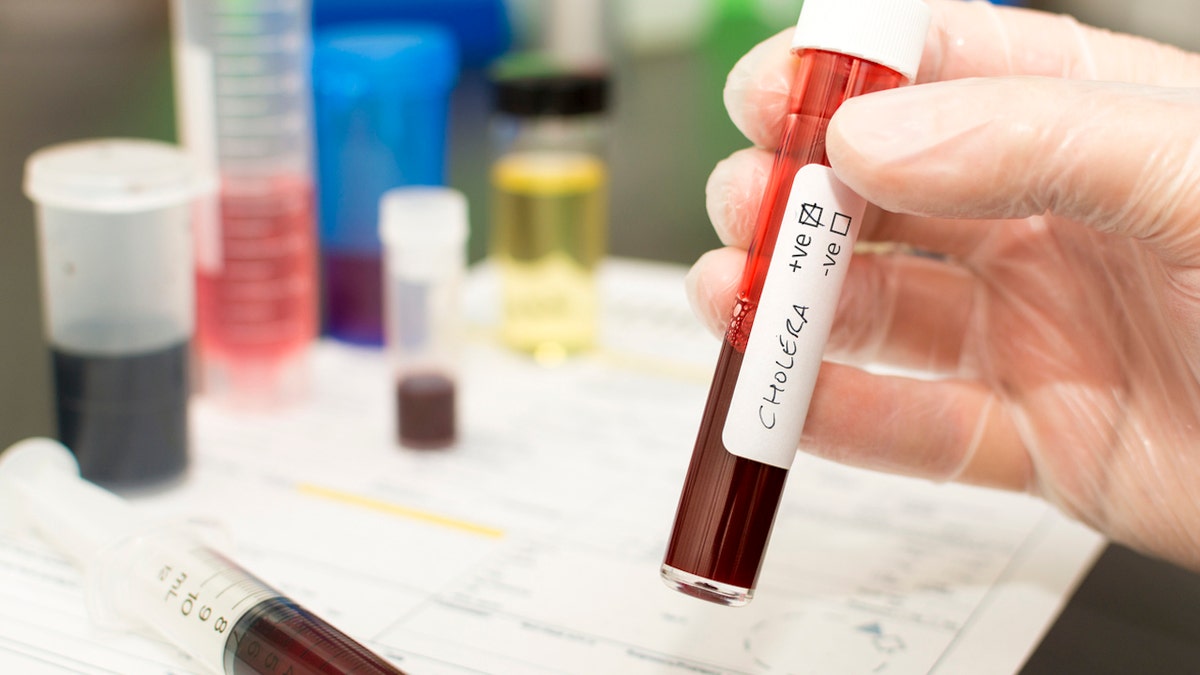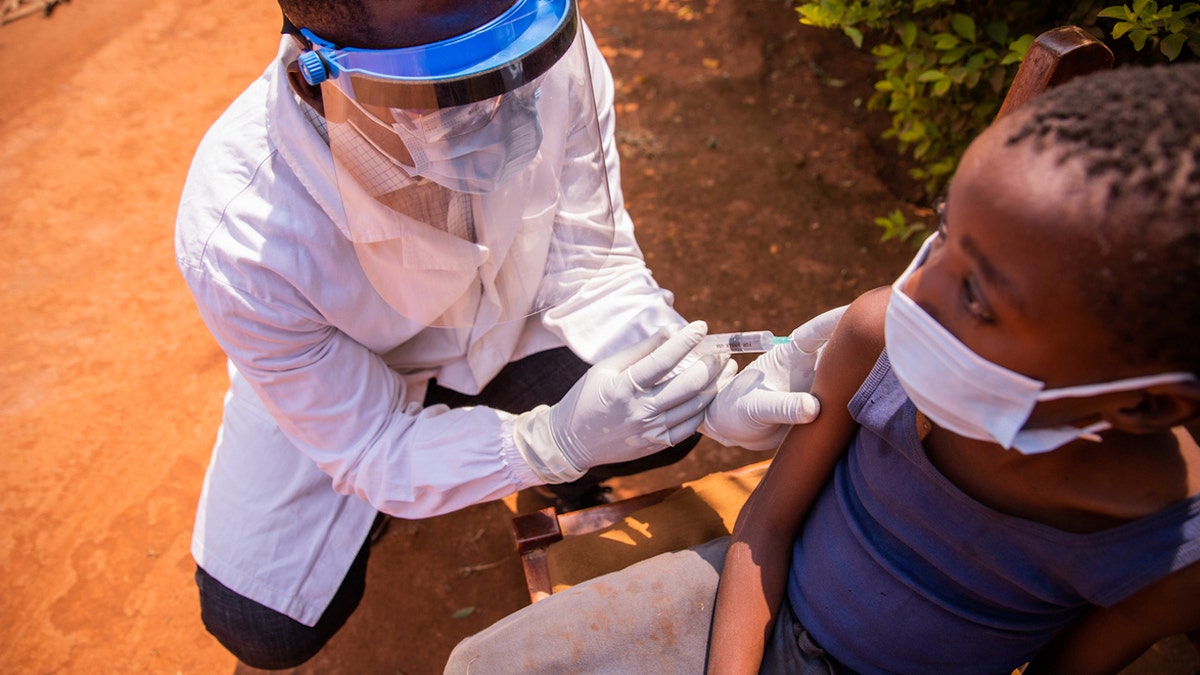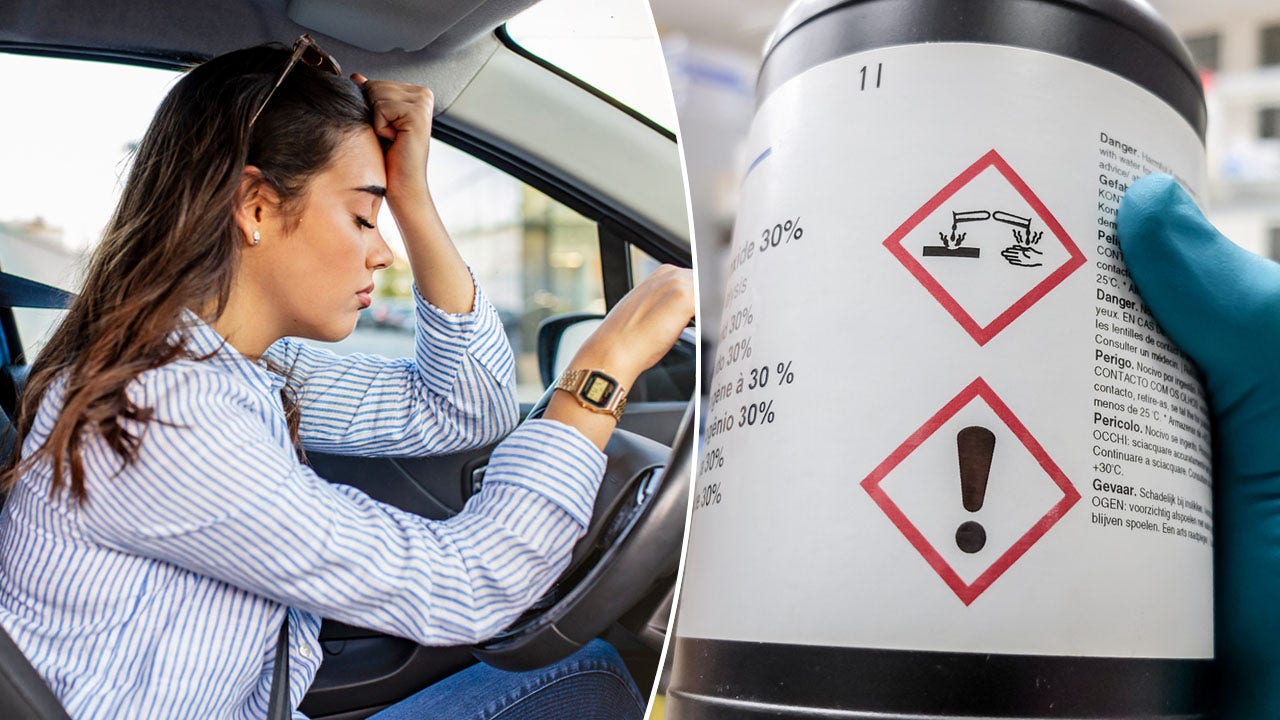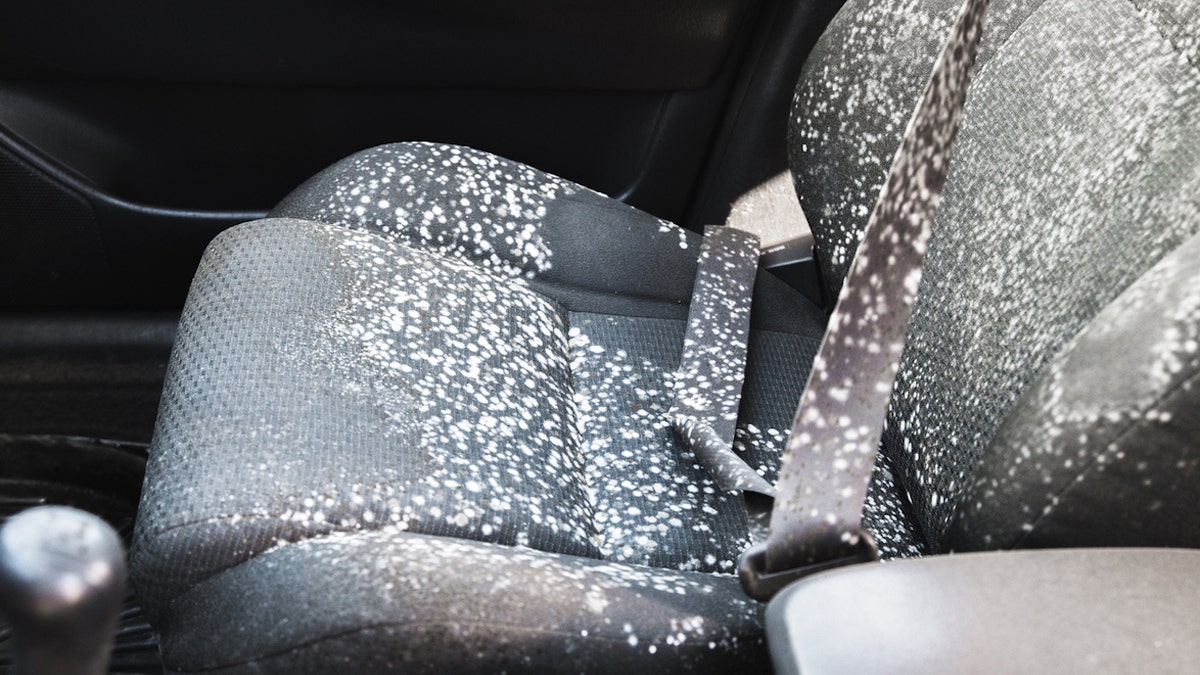Health
As cholera cases rise worldwide, health officials sound 'concerning' alarm about vaccine shortages

As cholera continues to surge — and as vaccines remain in short supply — experts are warning about the global risk.
Cholera is a bacterial disease typically spread by food and water, leading to severe diarrhea and dehydration. It has been on the rise around the world since 2021.
Each year, there are some 1.3 to 4 million cases of cholera worldwide, according to the World Health Organization (WHO). Approximately 21,000 to 143,000 deaths occur as a result.
HIGH LEVELS OF RESISTANT BACTERIA FOUND IN UNCOOKED MEATS AND RAW DOG FOOD: ‘RED FLAG’
Around 473,000 cases were reported to WHO in 2022, which was twice as many cases as the prior year.
Reported cases for 2023 are expected to exceed 700,000.
As cholera continues to surge — and as vaccines remain in short supply — experts are warning about the global risk. (iStock)
“It is concerning to see an increase in the number of cholera cases worldwide, with the majority of the cases in Asia, Africa and Latin America,” Dr. Renuga Vivekanandan, M.D., assistant dean and professor at the Creighton University School of Medicine in Omaha, Nebraska, told Fox News Digital.
The countries most affected include the Democratic Republic of the Congo, Ethiopia, Haiti, Somalia, Sudan, Syria, Zambia and Zimbabwe, according to UNICEF.
The disease can spread quickly in locations where there is insufficient treatment of drinking water and sewage.
Although cholera cases were prevalent in the U.S. in the 1800s, water treatment systems have largely eliminated the disease, per the CDC.
In rare cases, people in the U.S. have contracted the disease from consuming raw or undercooked shellfish from the Gulf of Mexico, the agency stated on its website.
AMID BIRD FLU SPREAD, EXPERTS REVEAL IF IT’S SAFE TO DRINK MILK: ‘INDIRECT CONCERN’
“In the U.S., the cases have remained very small and are usually from travel exposure,” Vivekanandan noted.
Why the spike in global cases?
Cholera is typically spread when someone drinks water or eats food that is contaminated with the bacterium Vibrio cholerae, according to the CDC.
The disease can spread quickly in locations where there is insufficient treatment of drinking water and sewage, the agency warned.

Cholera has been on the rise around the world since 2021, according to health officials. (iStock)
It is not typically transmitted from person to person.
UNICEF noted in a statement that the rise in cholera is driven by “persistent gaps in access to safe water and sanitation.”
“In the U.S., the cases have remained very small and are usually from travel exposure.”
“I think the cases might be increasing due to climate change, displacements of homes due to disasters, and not having good sanitary conditions, such as poor water sources,” Vivekanandan told Fox News Digital.
Symptoms of cholera
Around 10% of the people who are infected with cholera will develop severe symptoms, including watery diarrhea, vomiting and leg cramps, according to the U.S. Centers for Disease Control and Prevention (CDC).
Advanced symptoms include shock and dehydration.
Without treatment, the disease can be fatal.

Around 10% of those who are infected with cholera will develop severe symptoms including watery diarrhea, vomiting and leg cramps, according to the CDC. (iStock)
“Dehydration is the biggest concern with cholera, and rehydration is the most important component of treatment,” said Vivekanandan.
“Most patients with cholera will have mild diarrhea, but 10% will have severe diarrhea and will need rehydration and treatment with antibiotics.”
WITH WHOOPING COUGH CASES ON THE RISE, DO YOU NEED A BOOSTER VACCINE?
Some groups are more susceptible to the disease, according to the CDC.
“Individuals with achlorhydria (the absence of hydrochloric acid in digestive stomach juices), blood type O, chronic medical conditions, and those without ready access to rehydration therapy and medical services are more likely to have severe disease from cholera and suffer poor outcomes,” the agency noted.
Treatment and prevention
The most effective treatment for cholera is “immediate replacement of the fluid and salts lost through diarrhea,” the CDC stated.
This is achieved by giving patients a mixture of sugar and salts mixed with 1 liter of water.
In some severe cases, the patient may require intravenous (IV) fluids.

There is a “severe gap” in the number of available vaccine doses compared to the level of current need, said UNICEF. (iStock)
Some patients also receive antibiotics to make symptoms less severe.
“Persons who develop severe diarrhea and vomiting in countries where cholera occurs should seek medical attention promptly,” per the CDC.
There is a single-dose vaccine for cholera, called Vaxchora (lyophilized CVD 103-HgR).
CDC WARNS OF INVASIVE BACTERIAL OUTBREAK AMID SPIKE IN CASES AND FATALITY RATES: ‘RARE BUT SEVERE’
Those who are between the ages of 2 and 64 and who are traveling to “an area of active cholera transmission” are eligible to receive it.
There are three other cholera vaccines, but they are not available in the U.S.
What to know about vaccine shortage
There is a “severe gap” in the number of available vaccine doses compared to the level of current need, said UNICEF on its website.
“Between 2021 and 2023, more doses were requested for outbreak response than the entire previous decade,” UNICEF noted.

In rare cases, people in the U.S. have contracted the disease from consuming raw or undercooked shellfish from the Gulf of Mexico, the CDC stated on its website. (iStock)
While cholera vaccines used to be administered in two doses, the International Coordinating Group (ICG) changed the recommendation to a single dose in Oct. 2022 due to the ongoing shortage.
Vivekanandan called the vaccine shortage “very concerning.”
NEW ANTIBIOTIC KILLS DEADLY, DRUG-RESISTANT BACTERIA IN ‘SCIENTIFIC BREAKTHROUGH’
“This is a serious infection, and we must invest financial and other resources to reduce the worldwide burden,” he told Fox News Digital.
“International resources need to be committed, and partnerships with pharmaceutical companies need to happen to help produce more vaccines.”
“This is a serious infection, and we must invest financial and other resources to reduce the worldwide burden.”
Vivekanandan also urged people who are traveling from the U.S. to other countries to review the CDC’s travel guidance and get any required vaccines.
“I would also recommend that people follow good travel medicine guidance, such as drinking bottled water, eating well-cooked food and making sure to have good hand hygiene,” he added.
CLICK HERE TO SIGN UP FOR OUR HEALTH NEWSLETTER
“As the WHO has stated, we need to have multi-pronged approaches, with a combination of surveillance, water, sanitation and hygiene, social mobilization, treatment, and oral cholera vaccines available for communities at high risk.”

The disease can spread quickly in locations where there is insufficient treatment of drinking water and sewage. (iStock)
On the U.S. Food and Drug Administration (FDA) website, Vaxchora is listed as a “resolved shortage.”
The FDA noted that Emergent Travel Health, manufacturer of the vaccine, announced in May 2021 the temporary discontinuation and distribution of Vaxchora, “due to a significant reduction of international travel caused by the COVID-19 pandemic.”
The shortage is listed as having been resolved in May 2023.
Fox News Digital reached out to WHO, the FDA and Emergent requesting comment.
For more Health articles, visit www.foxnews.com/health.

Health
Introducing Our Product Reviews Team, and How We Review | Woman's World

Sign Up
Create a free account to access exclusive content, play games, solve puzzles, test your pop-culture knowledge and receive special offers.
Already have an account? Login
Forgot your password?
Get back to the Sign In
Use left and right arrow keys to navigate between menu items.
Use escape to exit the menu.
Health
What You Should Know About the Military Diet: Experts Weigh In | Woman's World

Sign Up
Create a free account to access exclusive content, play games, solve puzzles, test your pop-culture knowledge and receive special offers.
Already have an account? Login
Forgot your password?
Get back to the Sign In
Use left and right arrow keys to navigate between menu items.
Use escape to exit the menu.
Health
Could your car make you sick? Study highlights potentially cancerous toxins in vehicles

Americans may be breathing in cancer-causing chemicals while driving, recent research suggests.
A study published in the journal Environmental Science & Technology has sparked discussions about the potentially harmful toxins that could be lurking in the cabins of vehicles.
“Certainly the indoor air quality can cause health symptoms,” Dr. Ken Speath, M.D., the division chief and medical director for occupational and environmental medicine at Northwell Health on Long Island, New York, told Fox News Digital.
‘FOREVER CHEMICALS’ FOUND IN US DRINKING WATER, MAP SHOWS ‘HOT SPOTS’ OF HIGHEST LEVELS
It is important to be mindful of what you’re breathing in at home, at the office, at school and even in cars, according to Speath, who was not involved in the study.
“There can be situations where levels of harmful chemicals get high enough to potentially cause health harms,” he said.
Americans may be breathing in cancer-causing chemicals while they are driving, recent research suggests. A study published in the journal Environmental Science & Technology has sparked many discussions. (iStock)
“A car is a closed small space — so whatever is in the air is certainly going to be breathed in.”
Research reveals ‘harmful chemicals’
The peer-reviewed study looked at 101 owned vehicles in the U.S., model year 2015 or newer.
The researchers concluded that harmful flame-retardant chemicals — including those suspected of potentially causing cancer and some neurological issues — may be polluting the air inside vehicles.
DRIVING DANGERS: 9 TOP DISTRACTIONS THAT CONTRIBUTE TO ACCIDENTS, ACCORDING TO EXPERTS
“Flame retardant chemicals, which are intentionally added to vehicle interiors to meet flammability standards, are released into the cabin air from the materials to which they were applied,” lead author Rebecca Hoehn, a scientist at Duke University, told Fox News Digital.
“People in these vehicles may be exposed to these chemicals.”
Seat foam was the only material the researchers measured, Hoehn said, but other interior materials could also contain the chemicals.

The researchers concluded that harmful flame-retardant chemicals — including those suspected of potentially causing cancer and some neurological issues — may be polluting the air inside vehicles. (iStock)
“Considering the average driver spends about an hour in the car every day, this is a significant public health issue,” Hoehn warned.
“It’s particularly concerning for drivers with longer commutes, as well as child passengers, who breathe more air pound for pound than adults.”
The chemicals detected in the car cabins included a flame retardant called tris (1-chloro-isopropyl) phosphate (TCIPP), which is currently being investigated as a potential carcinogen by the U.S. National Toxicology Program.
“Considering the average driver spends about an hour in the car every day, this is a significant public health issue.”
Other flame retardants — tris (1, 3-dichloro-2-propyl) phosphate (TDCIPP) and tris (2-chloroethyl) phosphate (TCEP) — were also detected.
These are “two Californian Proposition 65 carcinogens linked to neurological and reproductive harms,” according to a press release.
Higher concentrations of the flame retardants were found during warmer weather.
“We found that the same cars, sampled in both winter and summer, had higher concentrations of flame retardants in the cabin air during the warm summer months,” Hoehn told Fox News Digital.

Flame retardants are added to vehicles to meet the National Highway Traffic Safety Administration Federal Motor Vehicle Safety Standard, which mandated their use in the 1970s. (iStock)
Flame retardants are added to vehicles to meet the National Highway Traffic Safety Administration Federal Motor Vehicle Safety Standard (FMVSS 302), which mandated their use in the 1970s, the release stated.
Flame retardants have been the “focus of concern for some time,” Speath told Fox News Digital.
More information is needed to determine the health risks these chemicals pose in humans, he said.
THESE MEDICATIONS COULD MAKE DRIVING DANGEROUS, THE FDA WARNS
“A number of these have been demonstrated in studies to have health harms in animals,” he said.
“That doesn’t necessarily mean that would be true for humans, but it raises that possibility, so we need to study these chemicals more in relation to their effects on humans.”

Higher concentrations of the flame retardants were found during warmer weather, the researchers said. (iStock)
Emanuela Taioli, M.D., PhD, the director of the Institute for Translational Epidemiology at Icahn School of Medicine at Mount Sinai in New York City, was also not part of the study, but shared her reactions.
“This is a very relevant finding, since it may prompt changes in cars’ upholstery, as well as in other parts of the car where there is foam,” she told Fox News Digital via email.
“We also want to know more about this finding and monitor whether it is replicated by other investigators.”
Other sources of toxins
Stephen Showalter, a home inspector and indoor environmental air consultant with Showalter Property Consultants in Maryland, said he typically interviews clients about their history of illness, then tests for potential sources of sickness in buildings, cars, RVs and boats.
Mold is a common culprit when it comes to health issues triggered by one’s environment, he said in an interview with Fox News Digital.
TOXIC CHEMICAL POISONING: HAVE YOU BEEN AFFECTED? HOW TO KNOW
Dr. Daniel Johns, a member of the International Society of Environmentally Acquired Illnesses and a chiropractor who practices in Annapolis, Maryland, echoed Showalter’s concerns about mold-related health issues.
Johns also cautioned that cars can be a daily source of mold exposure.
“Any water that leaks from a window, sunroof or convertible can get into the carpet and cause mold growth,” he said during an interview with Fox News Digital.

Mold is a common culprit when it comes to health issues triggered by one’s environment, according to an environmental expert. (iStock)
“Mold can start growing on a wet surface within 24 to 48 hours.”
For families with small children, spilled sippy cups could play a role when it comes to mold in cars, Johns warned.
“The water seeps into the upholstery and doesn’t get noticed or properly dried out, and the whole seat can become moldy,” he said.
“Mold can start growing on a wet surface within 24 to 48 hours.”
“Every time you sit on the seat, it releases a mold spore cloud into the car. Once that happens, you can’t clean it away. The upholstery must be removed and replaced.”
The impact of these potentially harmful pollutants can vary from one person to the next, experts told Fox News Digital.

For families with small children, spilled sippy cups could play a role when it comes to mold in cars, an expert warned. (Kids and Car Safety)
People metabolize chemicals and toxins in different ways, according to Taioli.
“Metabolism happens through enzymes that the body produces,” he said.
“Each of us has a different genetic profile that defines our metabolic capacity. As a consequence, the same amount of toxin may be metabolized better/faster by some, and worse/slower by others.”
Tips for ensuring safe interiors
While further research on car-borne chemicals is needed, experts say people can take measures to limit exposure.
“People may be able to reduce their exposure by ventilating their cars,” Hoehn advised.
“For example, rolling down the windows to let out contaminated air, or pulling in fresh air with climate control systems, should reduce concentrations.
“Ultimately, reducing the amount of flame retardants added to vehicles in the first place would provide the greatest reduction in exposure risk.”
Controlling your vehicle’s cabin temperature may also reduce exposure, she added.
“Parking in a garage or shade instead of full sun may reduce the cabin temperature and limit the extent of flame retardant release,” Hoehn said.
The researchers also called for action from regulatory agencies and vehicle manufacturers.
CLICK HERE TO SIGN UP FOR OUR HEALTH NEWSLETTER
“Ultimately, reducing the amount of flame retardants added to vehicles in the first place would provide the greatest reduction in exposure risk,” Hoehn noted.
“If flammability standards for vehicles could be revised to meet fire safety guidelines without the use of added flame retardants, risk of flame retardant exposure from personal vehicles could be greatly reduced.”

To prevent mold in a vehicle, experts recommend keeping your windows up when it rains or snows to prevent water from permeating the carpet or fabric. (iStock)
Having your car’s air quality and surfaces tested is one way to reduce the risk of exposure to allergens, toxins and chemicals, experts told Fox News Digital.
To prevent mold in a vehicle, Showalter recommends keeping your windows up when it rains or snows to prevent water from permeating the carpet or fabric.
He also cautioned about leaky air conditioners, which can foster mold growth in vehicles, and about leaving wet items in the car.
Lastly, before buying a used car, he said it is important to check the vehicle’s history to make sure it doesn’t have flood damage, which can lead to mold and other issues.
If you think you are experiencing illness due to chemical exposure in your car, home or office, it’s best to see a health care professional to discuss your symptoms.
Fox News Digital reached out to several major car companies for comment.
For more Health articles, visit www.foxnews.com/health.
-

 Finance1 week ago
Finance1 week agoSpring Finance Forum 2024: CRE Financiers Eye Signs of Recovery
-

 World1 week ago
World1 week agoIndia Lok Sabha election 2024 Phase 4: Who votes and what’s at stake?
-

 Politics1 week ago
Politics1 week agoBiden’s decision to pull Israel weapons shipment kept quiet until after Holocaust remembrance address: report
-

 News1 week ago
News1 week agoThe Major Supreme Court Cases of 2024
-

 News1 week ago
News1 week agoTornadoes tear through the southeastern U.S. as storms leave 3 dead
-

 World1 week ago
World1 week agoA look at Chinese investment within Hungary
-

 Politics1 week ago
Politics1 week agoTales from the trail: The blue states Trump eyes to turn red in November
-

 World1 week ago
World1 week agoBorrell: Spain, Ireland and others could recognise Palestine on 21 May















